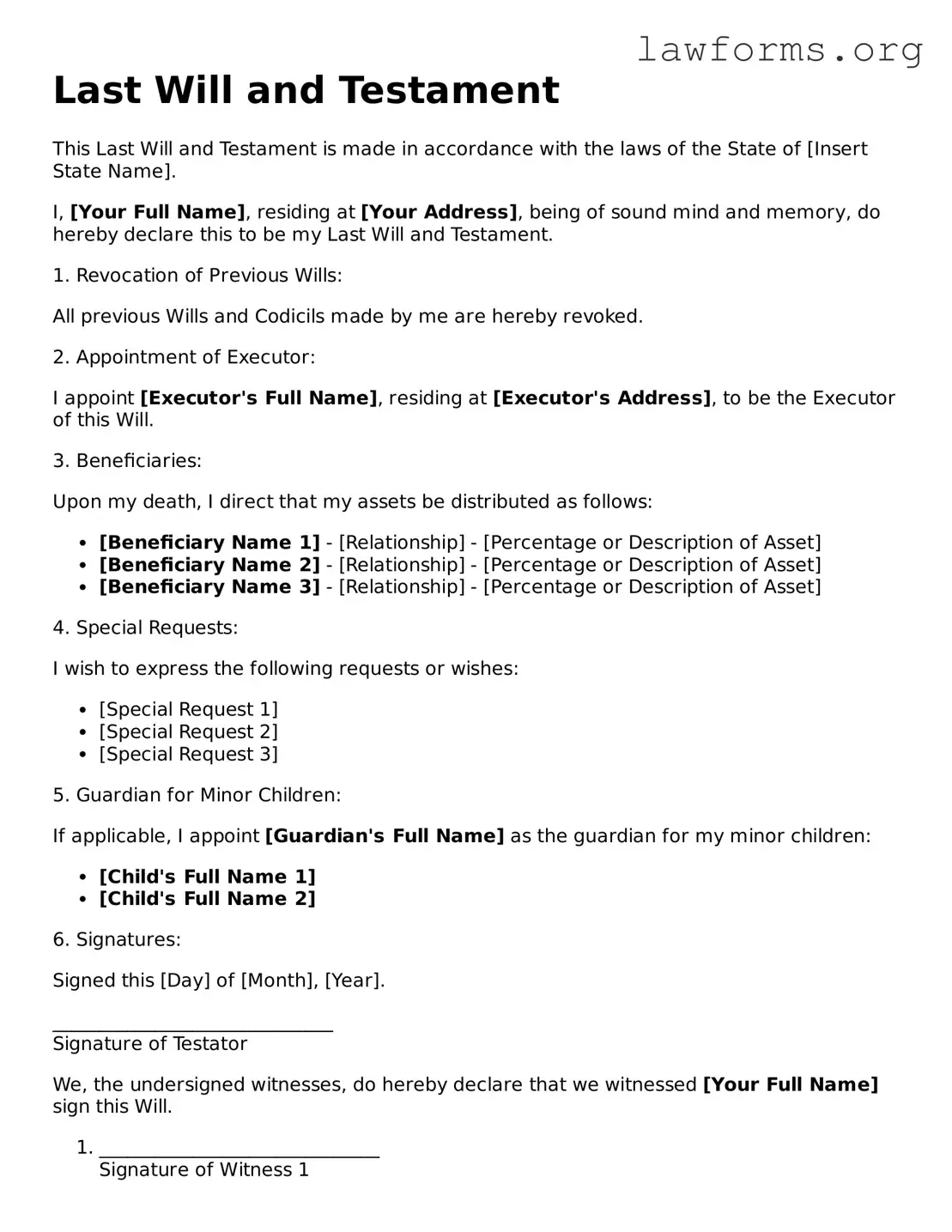Last Will and Testament
This Last Will and Testament is made in accordance with the laws of the State of [Insert State Name].
I, [Your Full Name], residing at [Your Address], being of sound mind and memory, do hereby declare this to be my Last Will and Testament.
1. Revocation of Previous Wills:
All previous Wills and Codicils made by me are hereby revoked.
2. Appointment of Executor:
I appoint [Executor's Full Name], residing at [Executor's Address], to be the Executor of this Will.
3. Beneficiaries:
Upon my death, I direct that my assets be distributed as follows:
- [Beneficiary Name 1] - [Relationship] - [Percentage or Description of Asset]
- [Beneficiary Name 2] - [Relationship] - [Percentage or Description of Asset]
- [Beneficiary Name 3] - [Relationship] - [Percentage or Description of Asset]
4. Special Requests:
I wish to express the following requests or wishes:
- [Special Request 1]
- [Special Request 2]
- [Special Request 3]
5. Guardian for Minor Children:
If applicable, I appoint [Guardian's Full Name] as the guardian for my minor children:
- [Child's Full Name 1]
- [Child's Full Name 2]
6. Signatures:
Signed this [Day] of [Month], [Year].
______________________________
Signature of Testator
We, the undersigned witnesses, do hereby declare that we witnessed [Your Full Name] sign this Will.
- ______________________________
Signature of Witness 1
[Witness 1 Full Name] - [Address]
- ______________________________
Signature of Witness 2
[Witness 2 Full Name] - [Address]
In witness whereof, I have hereunto set my hand this [Day] of [Month], [Year].
